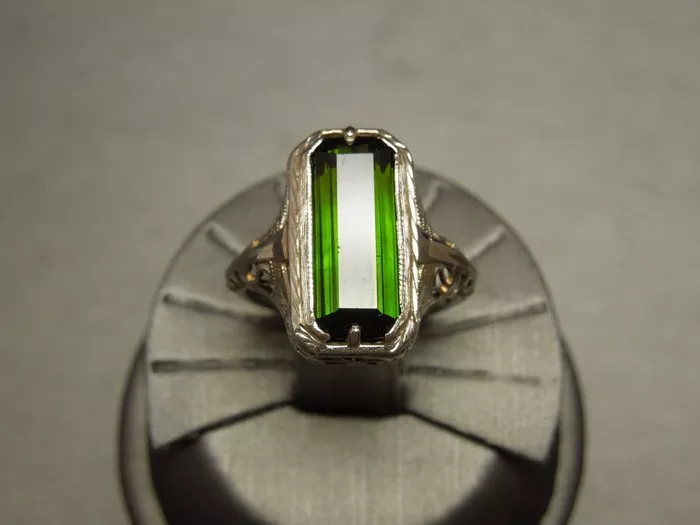Turquoise, with its captivating hues and rich cultural heritage, stands as a testament to nature’s unparalleled artistry and beauty. Revered for millennia by civilizations around the world, turquoise occupies a unique place in the realm of gemstones, embodying both rarity and significance. In this comprehensive exploration, we delve into the enigmatic world of turquoise, unraveling the mysteries surrounding its scarcity and enduring allure.
Understanding Turquoise
Before delving into the rarity of turquoise, it’s essential to understand the gemstone’s storied history and cultural significance. Turquoise derives its name from the French word “pierre turquoise,” meaning “Turkish stone,” reflecting its historical trade routes through the Middle East. Renowned for its distinctive blue-green hues reminiscent of tropical waters, turquoise has been prized by civilizations spanning ancient Egypt, Persia, Mesopotamia, and the indigenous cultures of North and South America.
Turquoise holds profound symbolic meaning across various cultures and belief systems. Revered as a sacred stone by Native American tribes, turquoise is believed to embody the spirit of the sky and the sea, serving as a talisman of protection, wisdom, and healing. In ancient Egyptian mythology, turquoise was associated with the goddess Hathor and was used to adorn ceremonial objects and jewelry of the highest order.
How Rare is Turquoise?
Despite its widespread cultural significance, turquoise is relatively rare in nature, owing to the unique geological conditions required for its formation. Turquoise forms through a complex process involving the interaction of copper-rich fluids with host rocks such as limestone, shale, and volcanic rock. This process typically occurs in arid, desert-like environments where copper deposits are abundant and where groundwater percolates through the earth’s crust over millions of years.
One of the primary factors contributing to the rarity of turquoise is its specific mineral composition, which includes copper, aluminum, and hydrated phosphate. The presence of these elements, along with trace impurities such as iron and zinc, gives turquoise its characteristic blue-green coloration. However, the precise combination of environmental factors required for turquoise formation is relatively rare, resulting in limited occurrences of high-quality turquoise deposits worldwide.
Global Sources of Turquoise:
Turquoise is found in various regions across the globe, each with its own unique geological characteristics and mining traditions. Some of the most renowned sources of turquoise include:
Persia (Modern-day Iran): Historically prized for its exceptional quality and vivid blue hues, Persian turquoise is renowned for its fine texture and minimal matrix. However, due to political instability and limited mining activity in recent decades, Persian turquoise has become increasingly rare and sought after by collectors and connoisseurs.
Southwestern United States: The American Southwest, particularly the states of Arizona, New Mexico, and Nevada, boasts abundant turquoise deposits, including renowned mines such as the Sleeping Beauty Mine, Kingman Mine, and Morenci Mine. These mines have produced a wide range of turquoise varieties, from sky-blue to vibrant green, each prized for its unique color and character.
Mexico: Mexico is home to several significant turquoise deposits, including the famous mines of Sonora, Zacatecas, and Chihuahua. Mexican turquoise is known for its rich blue-green hues and distinctive matrix patterns, which range from intricate spiderweb patterns to bold matrix-free specimens.
China: In recent years, China has emerged as a major producer of turquoise, particularly from the mines of Hubei Province. Chinese turquoise is prized for its vibrant colors and unique matrix patterns, which often feature intricate spiderweb or dendritic formations.
Factors Affecting Turquoise Rarity:
Several factors contribute to the rarity of turquoise, including geological, environmental, and cultural influences. These factors include:
Geological Conditions: The formation of turquoise relies on specific geological conditions, including the presence of copper-rich fluids, suitable host rocks, and arid environments conducive to mineral deposition. These conditions are relatively rare, resulting in limited occurrences of high-quality turquoise deposits.
Mining Practices: The extraction of turquoise is often labor-intensive and requires specialized knowledge and techniques. Traditional mining methods, such as hand digging and tunneling, are still employed in many turquoise-producing regions, limiting the scale and efficiency of production.
Environmental Concerns: Turquoise mining can have significant environmental impacts, particularly in sensitive ecosystems such as desert environments. Irresponsible mining practices, including habitat destruction, water pollution, and land degradation, can threaten the long-term viability of turquoise deposits and contribute to their rarity.
Cultural Significance: Turquoise holds profound cultural and spiritual significance for many indigenous communities, who regard it as a sacred stone imbued with protective and healing properties. As a result, access to turquoise deposits may be restricted or regulated by cultural protocols and traditions, further limiting its availability to outside markets.
Conclusion
As the demand for turquoise continues to grow, driven by consumer interest in natural gemstones and artisanal craftsmanship, it is essential to adopt sustainable practices that safeguard the long-term viability of turquoise deposits and support the communities that rely on them. This includes promoting responsible mining practices, supporting local economies, and respecting the cultural heritage and traditions associated with turquoise production.
By recognizing the rarity and cultural significance of turquoise, we can ensure that this precious gemstone continues to inspire and captivate future generations with its timeless beauty and enduring allure. Whether adorning a piece of fine jewelry or cherished as a symbol of protection and wisdom, turquoise stands as a testament to nature’s bounty and the rich tapestry of human creativity and ingenuity.


